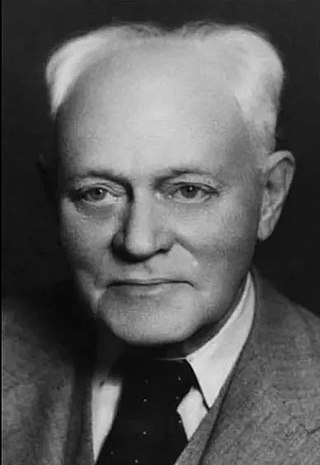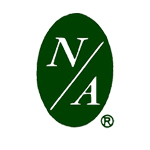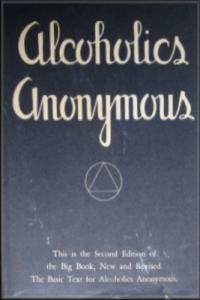
Alcoholics Anonymous (AA) is a global peer-led mutual aid fellowship begun in the United States dedicated to abstinence-based recovery from alcoholism through its spiritually inclined twelve-step program. AA's twelve traditions, besides stressing anonymity, establish it as non-professional, unafiliated, non-denominational and apolitical with a public relations policy of attraction rather than promotion. In 2020 AA estimated a worldwide membership of over two million, with 75% of those in the US and Canada.
Twelve-step programs are international mutual aid programs supporting recovery from substance addictions, behavioral addictions and compulsions. Developed in the 1930s, the first twelve-step program, Alcoholics Anonymous (AA), founded by Bill Wilson and Bob Smith, aided its membership to overcome alcoholism. Since that time dozens of other organizations have been derived from AA's approach to address problems as varied as drug addiction, compulsive gambling, sex, and overeating. All twelve-step programs utilize a version of AA's suggested twelve steps first published in the 1939 book Alcoholics Anonymous: The Story of How More Than One Hundred Men Have Recovered from Alcoholism.
Rational Recovery (RR) was a commercial vendor of material related to counseling, guidance, and direct instruction for addiction designed as a direct counterpoint to Alcoholics Anonymous (AA) and twelve-step programs.

William Duncan Silkworth was an American medical doctor and specialist in the treatment of alcoholism. He was director of the Charles B. Towns Hospital for Drug and Alcohol Addictions in New York City in the 1930s, during which time William Griffith Wilson, a future co-founder of Alcoholics Anonymous (A.A.), was admitted on four occasions for alcoholism. Dr. Silkworth had a profound influence on Wilson and encouraged him to realize that alcoholism was more than just an issue of moral weakness. He introduced Wilson to the idea that alcoholism had a pathological, disease-like basis.

William Griffith Wilson, also known as Bill Wilson or Bill W., was the co-founder of Alcoholics Anonymous (AA).
The Twelve Traditions of twelve-step programs provide guidelines for relationships between the twelve-step groups, members, other groups, the global fellowship, and society at large. Questions of finance, public relations, donations, and purpose are addressed in the traditions. They were originally written by Bill Wilson after the founding of the first twelve-step group, Alcoholics Anonymous (AA).

Abraham Joshua Heshel Twerski was an Israeli-American Hasidic rabbi, a scion of the Chernobyl Hasidic dynasty, and a psychiatrist specializing in substance abuse.
Higher Power is a term used in Alcoholics Anonymous (AA) and other twelve-step programs. The same groups use the phrases "a power greater than ourselves" and "God of our understanding" synonymously. The term is intentionally vague because the program is not tied to a particular religion or spiritual tradition; members may use it to refer to any supreme being or deity, another conception of God, or even non-supernatural things such as the twelve-step program itself.

James Burwell, known as Jim B. or Jimmy B., was one of the Alcoholics Anonymous (AA) founding members. He was among the first ten members of AA on the East Coast, and was responsible for starting Alcoholics Anonymous in Philadelphia and Baltimore. Later in life, he and Rosa, his wife, moved to San Diego, California and were instrumental in the growth of AA there.

Neurotics Anonymous (N/A), founded in 1964, is a twelve-step program for recovery from mental and emotional illness. To avoid confusion with Narcotics Anonymous (NA), Neurotics Anonymous is abbreviated N/A or NAIL.
Nicotine Anonymous (NicA) is a twelve-step program founded in 1982 for people desiring to quit smoking and live free of nicotine. As of July 2017, there are over 700 face-to-face meetings in 32 countries worldwide with the majority of these meetings occurring in the United States, Iran, India, Canada, Brazil, the United Kingdom, Australia, Russia and in various online community and social media platforms.. NicA maintains that total abstinence from nicotine is necessary for recovery. NicA defines abstinence as “a state that begins when all use of nicotine ceases.
Drug addiction recovery groups are voluntary associations of people who share a common desire to overcome their drug addiction. Different groups use different methods, ranging from completely secular to explicitly spiritual. Some programs may advocate a reduction in the use of drugs rather than outright abstention. One survey of members found active involvement in any addiction recovery group correlates with higher chances of maintaining sobriety. Although there is not a difference in whether group or individual therapy is better for the patient, studies show that any therapy increases positive outcomes for patients with substance use disorder. The survey found group participation increased when the individual members' beliefs matched those of their primary support group. Analysis of the survey results found a significant positive correlation between the religiosity of members and their participation in twelve-step programs and to a lesser level in non-religious SMART Recovery groups, the correlation factor being three times smaller for SMART Recovery than for twelve-step addiction recovery groups. Religiosity was inversely related to participation in Secular Organizations for Sobriety.

Alcoholics Anonymous (AA) is a global fellowship founded in 1935 by Bill Wilson and Robert Smith, and has since grown to be worldwide
SMART Recovery is an international community of peer support groups that help people recover from addictive and problematic behaviors, using a self-empowering and evidence-informed program. SMART stands for Self-Management and Recovery Training. The SMART approach is secular and research-based. SMART has a global reach, with a presence established in more than 30 countries. SMART Recovery is effective with a range of addictive and problematic behaviors

LifeRing Secular Recovery is a secular, non-profit organization providing peer-run addiction recovery groups. The organization provides support and assistance to people seeking to recover from alcohol and drug addiction, and also assists partners, family members and friends of addicts or alcoholics. It is an abstinence-based recovery program with three fundamental principles: sobriety, secularity and self-empowerment. The motto of LifeRing is "empower your sober self."
Charles Barnes Towns (1862–1947) conducted experimentation with cures for alcoholism and drug addiction, and helped draft drug control legislation in the United States during the early 20th century.
Harry M. Tiebout was an American psychiatrist who promoted the Alcoholics Anonymous approach to the public, patients and fellow professionals. He served on the Board of Trustees of Alcoholics Anonymous from 1957 to 1966 and was president of the National Council on Alcoholism from 1951 to 1953.
Willingway, located in Statesboro, Georgia, is a privately owned hospital which specializes in treating alcoholism and drug addiction. The treatment modality at Willingway Hospital is based on the principles of the twelve-step program, Alcoholics Anonymous. It is referred to by many as "The Betty Ford Center of the South."
Underearners Anonymous (UA) is a twelve-step program founded in 2005 for men and women who have come together to overcome what they call "underearning". Underearning is not just the inability to provide for oneself monetarily including the inability to provide for one's needs presently and in the future but also the general inability to express one's capabilities and competencies. The underlying premise of Underearners Anonymous is that underearning is a kind of mental disorder regarding the use of time, rather like the alcoholic's self-destructive compulsion to drink to excess.









